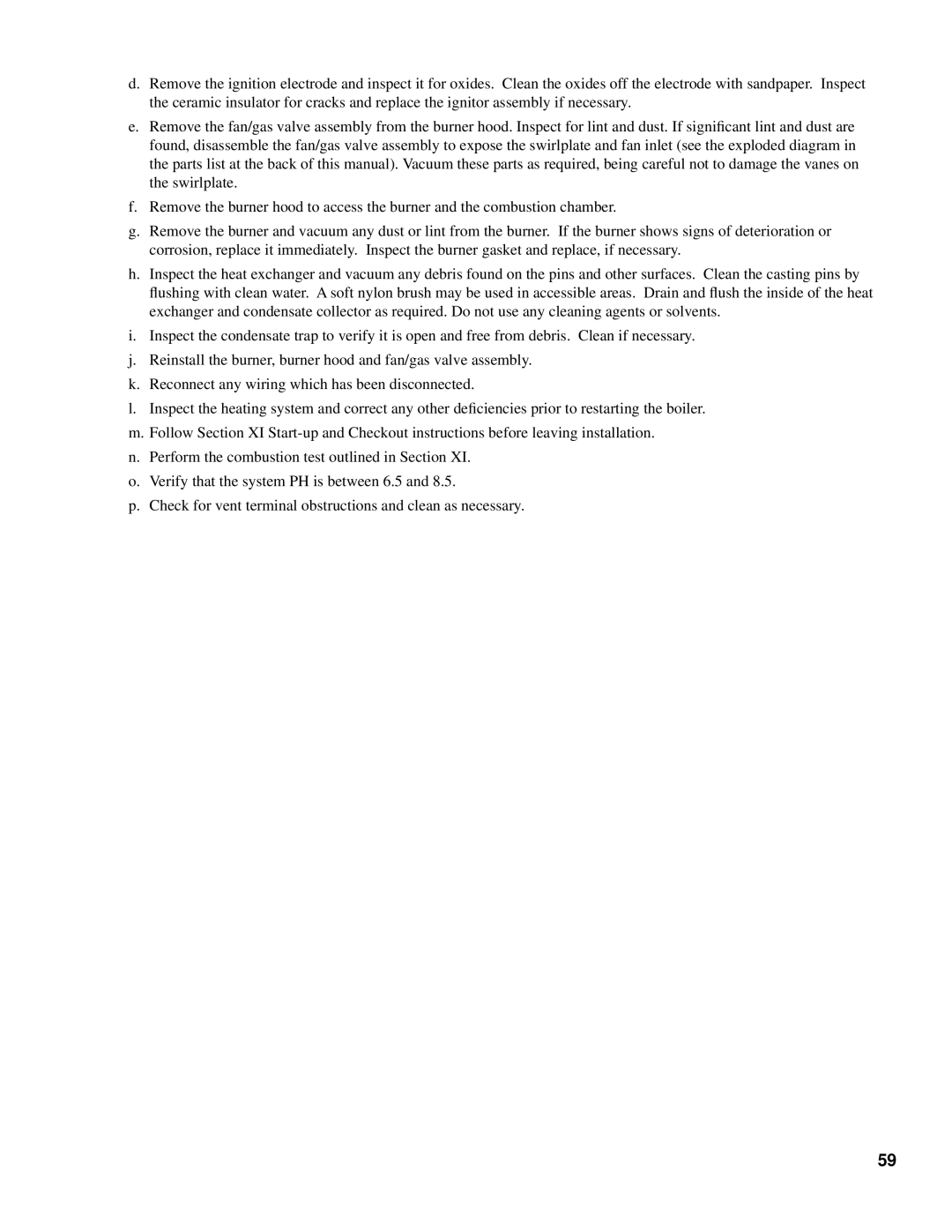d.Remove the ignition electrode and inspect it for oxides. Clean the oxides off the electrode with sandpaper. Inspect the ceramic insulator for cracks and replace the ignitor assembly if necessary.
e.Remove the fan/gas valve assembly from the burner hood. Inspect for lint and dust. If significant lint and dust are found, disassemble the fan/gas valve assembly to expose the swirlplate and fan inlet (see the exploded diagram in the parts list at the back of this manual). Vacuum these parts as required, being careful not to damage the vanes on the swirlplate.
f.Remove the burner hood to access the burner and the combustion chamber.
g.Remove the burner and vacuum any dust or lint from the burner. If the burner shows signs of deterioration or corrosion, replace it immediately. Inspect the burner gasket and replace, if necessary.
h.Inspect the heat exchanger and vacuum any debris found on the pins and other surfaces. Clean the casting pins by flushing with clean water. A soft nylon brush may be used in accessible areas. Drain and flush the inside of the heat exchanger and condensate collector as required. Do not use any cleaning agents or solvents.
i.Inspect the condensate trap to verify it is open and free from debris. Clean if necessary.
j.Reinstall the burner, burner hood and fan/gas valve assembly.
k.Reconnect any wiring which has been disconnected.
l.Inspect the heating system and correct any other deficiencies prior to restarting the boiler.
m.Follow Section XI
n.Perform the combustion test outlined in Section XI.
o.Verify that the system PH is between 6.5 and 8.5.
p.Check for vent terminal obstructions and clean as necessary.
59
